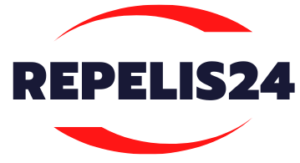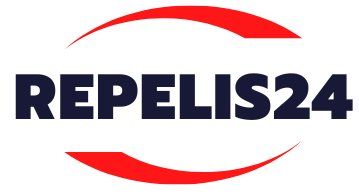Athletes, both amateur and professional, push their bodies to the limit—sometimes beyond it. Intense training, impact injuries, repetitive stress, and sudden trauma often result in nerve damage. This can manifest as burning, tingling, numbness, or sharp shooting pain in the limbs or joints. In the world of sports medicine, managing this kind of neuropathic pain isn’t just about symptom control; it’s about getting the athlete back to performance safely and efficiently.
Treating nerve-related sports injuries requires more than just ice and rest. It involves a mix of diagnostics, advanced interventional therapies, and recovery plans built around the physical demands of sport. Properly managing this pain not only enhances athletic performance but prevents long-term complications like chronic pain syndromes or functional deficits. Here are five specialized pain management services that are being used in the sports field today to treat nerve-related damage effectively.
1. Advanced Neuropathy Treatments in Sports Rehabilitation
Nerve damage in athletes can stem from repeated compressive forces, overstretching injuries, or inflammation around peripheral nerve pathways. Advanced neuropathy treatments are now a core part of sports medicine. These treatments aren’t just aimed at reducing pain—they target the underlying neuroinflammation and signal disruptions that cause chronic nerve discomfort.
One such approach is neurostimulation, where implanted devices deliver precise electrical pulses to damaged nerve areas. According to a 2021 clinical study published in Pain Medicine, spinal cord stimulation significantly reduced pain scores in athletes suffering from post-surgical nerve trauma and improved their functional recovery times. Another study published in The Journal of Orthopaedic Sports Physical Therapy emphasized that combining physical therapy with neurostimulation in patients with lumbar radiculopathy resulted in a 45% faster return-to-play outcome than with physical therapy alone.
In sports recovery settings, doctors might also use corticosteroid injections, nerve ablation, or high-frequency TENS (Transcutaneous Electrical Nerve Stimulation) to suppress overactive nerves. These treatments aren’t just about numbing the area temporarily—they help “reset” the nervous system’s response to mechanical stress, a key benefit when the goal is to restore dynamic performance.
Most importantly, these therapies are customized based on nerve conduction studies and MRI imaging. This individualized approach ensures the pain source is accurately targeted, and that the athlete can resume sport-specific training with confidence. Integrating these technologies with rehab plans can mean the difference between prolonged downtime and a successful comeback.
2. Dorsal Root Ganglion (DRG) Therapy for Sport-Specific Nerve Pain
In high-impact and repetitive-motion sports, peripheral nerve pain is a common issue, especially in areas like the groin, shoulders, or spine where complex nerve bundles run close to load-bearing joints. This is where Dorsal Root Ganglion (DRG) therapy comes into play—a cutting-edge technique that targets pain at its neurological root.
DRG therapy focuses on the dorsal root ganglion, a cluster of sensory nerve cell bodies near the spine that modulate pain signals before they enter the central nervous system. In athletic injuries, these clusters can become hyperactive due to mechanical strain, inflammation, or previous trauma, resulting in chronic or recurring pain that doesn’t respond well to traditional treatments. DRG therapy involves placing a small electrode near the specific ganglion responsible for the pain. Once activated, this device sends precise electrical impulses that interrupt or calm down the abnormal pain signals without affecting motor function—critical for athletes who still need full muscle control.
Clinical trials have shown significant benefits. A 2020 study in Neuromodulation demonstrated that DRG stimulation reduced pain by over 50% in more than 70% of patients who had focal neuropathic pain not relieved by other therapies. Athletes with sports hernia-related neuralgia or pudendal nerve entrapment have reported notable relief following DRG interventions, allowing them to return to competition after months of failed conservative treatments.
One major advantage of DRG therapy in sports medicine is that physicians often offer a trial stimulation period before committing to permanent implantation. This allows an athlete to experience symptom reduction firsthand without long-term risk. During the trial, if pain is significantly reduced and mobility improves, a permanent implant may be considered.
When combined with anti-inflammatory medications, targeted physiotherapy, and gradual load-bearing training, DRG therapy doesn’t just mask the symptoms—it supports neural recovery and helps recalibrate pain signaling. For athletes battling stubborn nerve-based pain in the spine, hips, or limbs, this is a therapy worth discussing with a sports neurologist or interventional pain specialist.
3. Neurostimulation Devices for Central Nervous System Pain in Athletes
While DRG therapy deals with nerve roots outside the spinal cord, spinal cord neurostimulation (SCS) handles pain from deeper, more central origins—like those coming from spinal trauma, post-surgical complications, or central sensitization after long-term injury. In high-performance athletes who’ve undergone spinal procedures or sustained vertebral injuries from impact sports like gymnastics, football, or martial arts, SCS offers a route to manage pain without relying on high-dose medications.
SCS works by implanting a thin wire electrode into the epidural space of the spine. This wire delivers low-voltage electrical signals that “confuse” the brain’s pain-processing centers, effectively overriding pain perception. The pulses are carefully calibrated to each patient’s nerve profile, which is especially important for athletes, whose pain patterns can shift with movement, posture, or physical exertion.
Evidence for its effectiveness is strong. In a multicenter trial published in Pain Practice (2021), SCS showed a 60–70% pain reduction rate in athletes dealing with chronic lumbar or thoracic neuropathy. Another study in Spine Journal (2019) found that athletes with post-laminectomy syndrome who received SCS were able to reduce opioid usage by 40% and resumed training 2.5 times faster than those treated with medications alone.
SCS is particularly valuable when pain persists long after the tissues have healed—indicating the nervous system itself has become “wound up,” a condition known as central sensitization. For athletes, this can be incredibly frustrating. Even after MRIs show no ongoing damage, the pain remains. Neurostimulation targets this exact mismatch between perception and reality.
As with DRG therapy, there’s a trial phase where the device is tested externally for a week. If pain improves and function returns, a permanent implant may be offered. These devices are fully programmable and now come with motion sensors and rechargeable systems, making them suitable for active lifestyles.
In a sports rehab environment, SCS is paired with movement retraining, sensory re-integration exercises, and mental coaching to help “re-wire” the athlete’s response to pain. When standard treatments like NSAIDs, massage, or physical therapy fall short, neurostimulation can serve as a crucial next step in regaining control over your body—and your sport.
4. Epidural Steroid Injections for Inflammation-Based Nerve Pain in Athletes
When athletes experience pain radiating from the spine down into the limbs—often due to conditions like a herniated disc, spinal stenosis, or radiculopathy—epidural steroid injections (ESIs) offer a way to reduce inflammation directly at the site of the nerve irritation. This is especially common in sports where axial load and spinal compression are frequent, such as weightlifting, wrestling, and long-distance running.
An ESI involves injecting a corticosteroid (such as prednisone or dexamethasone) combined with a local anesthetic into the epidural space of the spinal canal. The goal is to reduce swelling and inflammation around the irritated nerve roots. This isn’t just about numbing pain—by calming the inflammatory process, the injection restores proper nerve function and allows the athlete to resume movement with reduced discomfort.
In sports medicine, the timing of this intervention matters. When administered early during a flare-up, ESIs can halt the progression of nerve compression syndromes before they become chronic. According to a study in The American Journal of Sports Medicine (2020), athletes who received lumbar ESIs within 6 weeks of symptom onset showed a 55% faster return-to-play rate compared to those who relied solely on oral medications and rest. Furthermore, a 2019 meta-analysis in Spine found that ESIs reduced radicular pain significantly in over 60% of patients with lumbar disc herniation, allowing better engagement with physical therapy.
However, ESIs are not standalone cures. They work best when integrated into a larger plan—usually one involving core stabilization exercises, anti-inflammatory nutrition protocols, and sports-specific rehab. Some athletes may need a series of injections spaced over several months, with each round delivering cumulative relief.
Guided by real-time fluoroscopy or MRI imaging, sports physicians can pinpoint exactly where the nerve compression is occurring. This precision ensures that only the affected area is treated, minimizing side effects and maximizing outcomes. When used appropriately, ESIs can buy valuable recovery time and keep athletes in the game—both literally and long-term—by stopping nerve pain at its inflammatory source.
5. Nerve Root Block Procedures for Focal Pain in Sports Injuries
Unlike epidural steroid injections, which target a broader region of nerve irritation, nerve root blocks (NRBs) deliver highly concentrated medication directly to a specific nerve root that’s causing localized pain. This kind of precision makes NRBs especially valuable in sports where injuries tend to affect very distinct regions of the body—think shoulder nerve entrapment in swimmers, sciatic nerve compression in sprinters, or cervical nerve issues in rugby players.
In this procedure, a small amount of anesthetic (often lidocaine or bupivacaine) combined with a corticosteroid is injected right at the problematic nerve root under fluoroscopic or ultrasound guidance. The injection provides both immediate pain relief and longer-term inflammation control, allowing for proper physical reconditioning. This enables the athlete to start active rehab much sooner, reducing the risk of muscle atrophy or joint stiffness.
Research supports its efficacy. A randomized controlled trial published in The Clinical Journal of Pain (2021) showed that targeted NRBs provided up to 12 weeks of pain relief in athletes with lumbar radiculopathy, compared to just 4–6 weeks with oral anti-inflammatory drugs. Moreover, a comparative study in Sports Health found that athletes undergoing NRBs were able to return to functional movement drills 30% faster than those treated with epidurals alone, especially in cases of single-nerve involvement.
An added benefit is diagnostic clarity. If a nerve root block eliminates the pain, it confirms that the injected nerve is the true pain generator. This insight helps doctors refine their treatment plan—whether that includes further injections, surgical consultation, or customized physiotherapy.
Sports physicians often combine NRBs with nerve mapping and EMG testing to trace the pain’s origin accurately. From there, athletes can transition into strengthening protocols with reduced risk of flare-ups. While not a permanent fix, NRBs serve as a key link in the chain of recovery, allowing athletes to stay on track while their nervous system calms and heals.
Doctors work to uncover underlying sources of nerve pain and offer appropriate pain management services. They accomplish this through diagnostic tests like MRIs, blood work, and nerve conduction studies. The findings guide whether antidepressants, anticonvulsants, opioids, or NSAIDs are appropriate. Injection therapies deliver steroids and anesthetics straight to inflamed nerve roots. Advanced solutions can help modulate pain signals from reaching the brain. Comprehensive approaches that combine medications, injections, and cell-stimulating therapy work to both relieve current discomfort and resolve issues for lasting relief. Secure pain relief services today.

